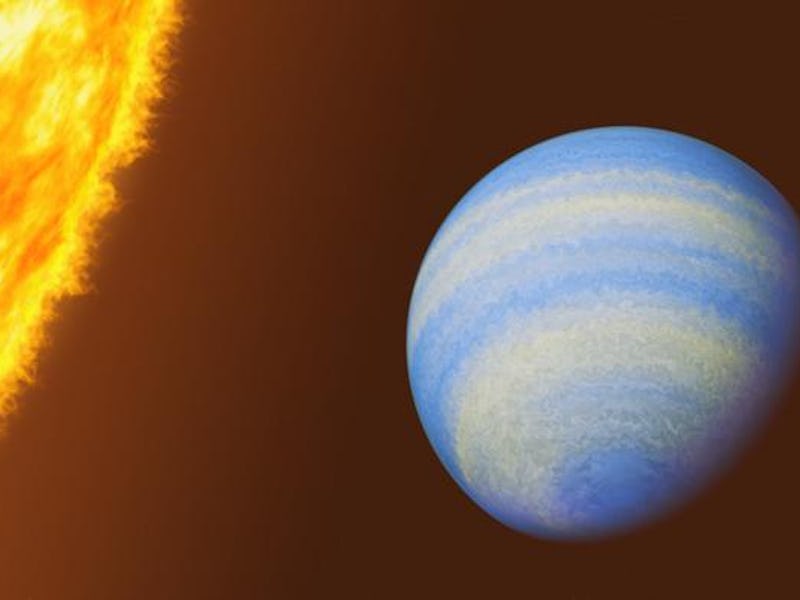This Scorchingly Hot Planet That Rains Down Glass Apparently Also Smells Like Rotten Eggs
A study published Monday shows evidence for the toxic, nasty-smelling gas hydrogen sulfide in a nearby exoplanet.

Astronomers don’t just detect exoplanets, or planets that orbit other stars, with today’s sharp telescopes. They can also feel them.
Prior data from the atmosphere of the Jupiter-sized world HD 189733 b, for instance, revealed its harsh, rapidly-blowing rain of glass, and that it is scorchingly hot. A new NASA-supported study found the exoplanet also reeks like rotten eggs.
A study published Monday in the journal Nature shows evidence for the presence of the toxic, nasty-smelling gas hydrogen sulfide in HD 189733 b. The knowledge isn’t just for sensorial space exploration: It shapes how astronomers understand the evolution of all planets under the Sun – err, stars.
An illustration of the Jupiter-sized exoplanet HD 189733 b.
Sewer gas on another world is a helpful clue. The chemical compound aids the construction of more complex molecules, including those essential to life. “Sulfur is a vital element for building more complex molecules, and — like carbon, nitrogen, oxygen, and phosphate — scientists need to study it more to fully understand how planets are made and what they’re made of,” Guangwei Fu, lead researcher and astrophysicist at Johns Hopkins University, said in an announcement about the new paper.
In the case of this particular exoplanet, Fu said, researchers aren’t looking for life. Astronomers already know this world, located 64 light years away from Earth, is inhospitable. Temperatures reach 1,700 degrees Fahrenheit there, and its glass-filled wind would humble any terrestrial storm, thanks to its 5,000 mph winds.
“We’re not looking for life on this planet because it’s way too hot, but finding hydrogen sulfide is a stepping stone for finding this molecule on other planets and gaining more understanding of how different types of planets form,” Fu added.
HD 189733 b is one of many exoplanets analyzed through a technique called the transit method. Astronomers glean details about it as the gas giant passes in front of its parent star. HD 189733 b is one of the nearest known “hot Jupiters” to Earth, making it a scientifically-rich object.
According to NASA, there are now more than 5,600 confirmed exoplanets in the Milky Way.